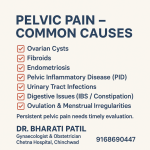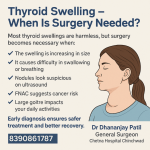By Dr. Dhananjay Patil
A pilonidal sinus infection is a painful and often recurring condition that affects the area near the tailbone, at the top of the buttocks. This condition can cause significant discomfort and, if left untreated, can lead to complications. Recognizing the signs and symptoms early is crucial for effective management. Here are the key indicators of a pilonidal sinus infection as explained by Dr. Dhananjay Patil.
Key Signs of a Pilonidal Sinus Infection
- Pain When Sitting or Standing
- One of the most common symptoms of a pilonidal sinus infection is intense pain in the affected area. This pain often worsens when sitting or standing for prolonged periods, making everyday activities challenging.
- Swelling in the Natal Cleft
- The natal cleft, or the crease between the buttocks, may become swollen. This swelling is typically due to the accumulation of pus and other fluids as the body tries to fight the infection.
- Reddened, Sore Skin Around the Area
- The skin surrounding the pilonidal sinus can become red and sore. This redness is a sign of inflammation and infection, indicating that the body is responding to the presence of bacteria or other pathogens.
- Pus or Blood Draining from the Abscess
- An infected pilonidal sinus often leads to the formation of an abscess, which can discharge pus or blood. This drainage typically has a foul odor due to the bacterial infection, and it can stain clothing and cause additional discomfort.
- Hair Protruding from the Lesion
- A characteristic feature of pilonidal sinus infections is the presence of hair within the lesion. Hair can become trapped in the sinus, exacerbating the infection and leading to the formation of more abscesses.
- Formation of Multiple Sinus Tracts or Holes in the Skin
- In severe cases, more than one sinus tract or hole may form in the skin. These additional tracts are pathways for the infection to spread, making treatment more complex and necessitating medical intervention.
Summary
Recognizing the signs of a pilonidal sinus infection is essential for seeking timely medical attention. Pain, swelling, redness, and drainage of pus or blood are common indicators of this condition. Additionally, the presence of hair in the lesion and the formation of multiple sinus tracts can signal a more severe infection.
If you suspect you have a pilonidal sinus infection, it’s crucial to consult a healthcare professional like Dr. Dhananjay Patil for an accurate diagnosis and appropriate treatment plan. Early intervention can help manage symptoms and prevent complications, improving your overall quality of life.













